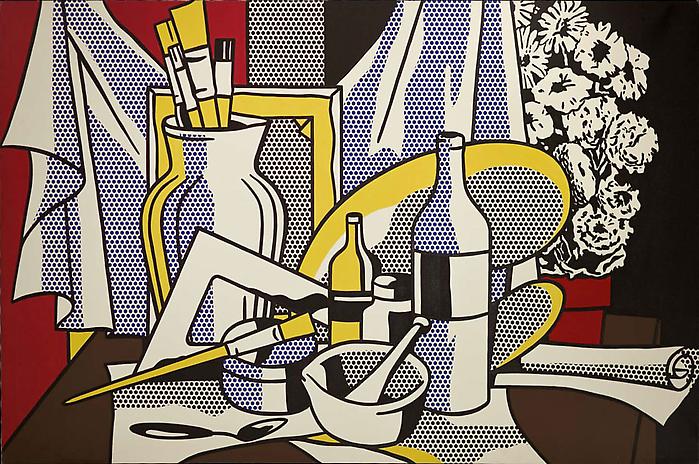As the month of November has begun, 3rd grade has been introduced to the art of "Still lifes". They were shown a series of famous still life paintings through art history and given a simple definition of
Still Life: An artwork that depicts an arrangement of human-made and/or natural objects in a setting. They took notes in their sketchbooks while we did comparisons between different styles of still lifes.
 |
| An impressionism still life painted by Claude Monet |
 |
| A "Fauvist" Still life painted by Henri Matisse |
 |
| An example of a Pop Art still life by Roy Lichtenstein |
|
|
 |
| A photograph still life created by Andy Warhol |
The 3rd graders were asked to explain their knowledge in defining how each example was in fact a still life. This allowed me to assess whether they truly understood what qualified as a still life.
Afterward, I composed a still life of gourds under the document camera. I then asked the students to sketch this arrangement in their books. I explained that we are using observations to create the drawing rather than relying on our imagination.
We reviewed Monart's 5 basic elements of shape, size relationships, and overlapping techniques. I had the students trace the contour of the objects with their fingers in the air first to get a sense of the contour shapes. Once they felt comfortable with what they were observing, they began to draw.
 |
| Still life arrangement of gourds |
 |
| Students are drawing in their sketchbooks. |
 |
| 3rd graders adding the color with crayons once they finished sketching. |
 |
| The next class they were asked to draw other objects from observation. |
I was very pleased with the students' abilities in observing then drawing. I like introducing this type of drawing in 3rd grade because this is the age when kids start to want to create realistic art. I leave plenty of room in the curriculum for imaginative expression but introducing them to still life art has opened up the door to begin realistically creating the illusion of space. As the year continues, we will study more techniques in communicating objects in space 2-dimensionally.









No comments:
Post a Comment